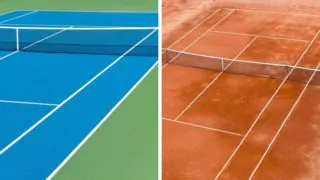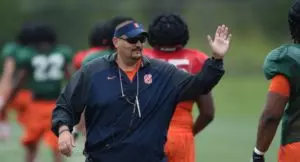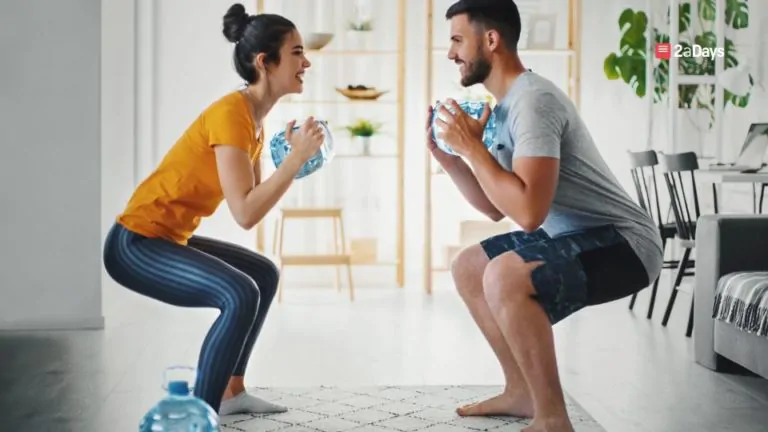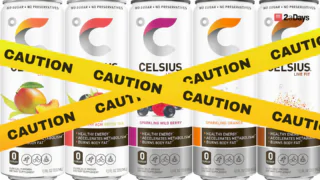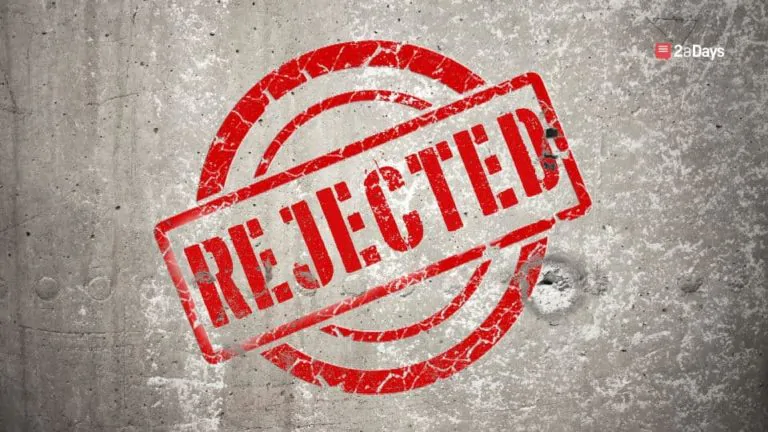Have you ever wondered why during some parts of the tennis season, you only see a select few great players win tournaments, but other parts of the season, they are not present? Or have you ever noticed certain tournaments where the names of players are ones you have never heard before and only come out to play on the tour for a few weeks? You can credit that to the different surfaces that the ATP tour has to offer.
1. Hard Courts:
Out of the total number of tournaments that the ATP tour offers every year, (including the Tour Finals, but not including the national competitions like United Cup, Laver Cup, or Davis Cup), 36 out of the 65 are on hard courts. Given that 55% of the draws are on hard courts, it is difficult to be successful as a tennis player if you are not comfortable on this surface. Hard courts are very interesting, as they are the only of the three surfaces to have various conditions from the court themselves. The elementary characteristics of hard courts are fast speeds and high bounces due to the makeup of the asphalt. The high relative speed of hard courts also are very generous to players who hit a flatter ball.
This brings up an interesting point about the composition of the surfaces in general: different brands, hired by the ATP tour, have their own recipes for hard courts. These mixtures, for the most part, are composed of layers of rubber, silica, and acrylic resins on top of a foundation of either asphalt or concrete. The differences in courts speeds (for example the first half of the Sunshine Double: Indian Wells, is a slow-hard court while the next week in Miami is on a faster court) comes from how much sand is put into the acrylic resin layer, as friction would allow the ball to not bounce with as much pace.
Related: 2023 Men's Clay Tennis Season Preview: Who Can Compete with Spain's Superstars?
There is one more factor when it comes to the conditions: Indoor hard courts. 13 out of the 36 hard court tournaments are held in indoor facilities; which are heavily found around Europe, but the USA has one (Dallas) and Asia boasts two (Astana and Tel-Aviv). Just as hard courts in general are generous to big servers and big power hitters, indoor conditions help even more as there is no wind or other weather concerns that can interfere with a player's game style. Given the fact that two out of the four grand slams (United States Open and Australian Open) and six out of nine Masters 1000 events are on hard courts, it is virtually impossible to be an elite level player and make strides in the rankings. When looking at the top ten, all the players are very well versed on the surface and have had their fair share of success. But one current player sticks out more than the others.
ATP 4: Daniil Medvedev
The 27-year-old Russian athlete is arguably the best hard court player of the last five years. Although he doesn't have the same Grand Slam count as someone like Novak Djokovic, eighteen of the nineteen career titles for Medvedev have been on hard courts (eight of them indoor including the 2020 Paris Masters and ATP finals back to back).
Speaking of back to back, the Russian found himself on a nineteen match win streak from Round 1 of Rotterdam on February 14th to the finals of Indian Wells on March 19th. In that span, he picked up the titles in Rotterdam and both stops on the Middle East swing: Dubai and Doha. After the heart-wrenching loss to Carlos Alcaraz in Indian Wells, he amassed another eight match win streak (including two wins on clay) that featured the title in the second half of the Sunshine Double in Miami. So far in 2023, Medvedev has four titles (leading the tour) and also leading the tour in hard court wins (29-3, 90% win rate). He is also a strong leader in the 52-week index, where Medvedev has 47 hard court wins. Interestingly enough, he is leading the 52 week field after having a relatively poor 2022. He picked up only two titles (a 500 being the largest) and went 34-14 on the surface; 71% win rate. Danill has had some mind boggling seasons on hard courts such as 2018 when he broke onto the scene and went 48-16 (75%). Even if the percentage isn't that much higher, the 14 more wins is significant and some players would be thrilled for 48 wins in the entire season. 2019 was a great year as well, as Medvedev churned out 46 wins and 4 titles (first and second Masters titles in Cincinnati and Shanghai).
Related: Daily Grind: Former Monmouth Tennis Star Nicole Gasser
Now the question is, why is Daniil so good on hard courts? The answer: he has the perfect recipe for success on the surface. At six feet six inches tall, he has a huge serve, which allows him to win points easily, and second his defensive skills which feature the very important flat hitting for a hard court, allows him to win a relatively large amount of return games. This is all coupled with the fact that he is arguably the best counter puncher on tour and has a consistent baseline game that rivals the greats. The interesting part for Daniil, is he hates the sand; meaning he hates slower hard courts and slower surfaces in general. With that in mind, Daniil is going to have some trouble in the upcoming month or two on the slow clay courts in Europe, but once we get back to the grass courts and North American summer hard court swing, expect him to be fighting for first place in the rankings again.
2. Clay Courts:
Just like Hard Courts, the clay is also composed of earthly minerals. In this case, the red clay, which is the color for every ATP tournament and every WTA tournament other than Charleston, is made up of crushed stone, but usually brick for the red color. The conditions of the court are very different from hard, as Clay is the slowest of the surfaces. The court speed is slow, as the high bounce from the ball hitting the surface loses most of its speed, making it hard for short points to be played off the serve.
Many analysts on broadcasts that I have personally watched, talk about the fact that the best clay court players need to create their own pace from their baseline strokes, as the surface will not be doing it for the players. Other than losing speed, the surface tends to award great athletes who can slide into defensive shots and drop shots, as sliding and movement is key to the defensive strategies of the clay, especially due to the ball not moving as fast. Although there is one type of clay, there are external variables that come into play, conditions wise.
While the clay itself is standard, how well the tournament directors maintain the clay throughout the week is crucial and so is where the tournament itself is located. 21 of the 65 tournaments on the ATP schedule are on clay, and many of the smaller 250 level tournaments are found in ski resort towns (common theme for 250s on all surfaces). The European ski resorts, and major cities in South America are what we consider to be high altitude, meaning the air is thin. Thin air allows players who tend to be better on faster surfaces a bit of an advantage, as the serve becomes bigger and so do the groundstrokes (slightly). More of these tournaments are found in the South American clay swing (golden swing) which is the first of three parts of the clay season (February) and tournaments in the Summer clay season (third part of the clay season in July which features famous ski resort towns such as Gstaad in Switzerland and Kitzbuhel in Austria).
Related: Looking Ahead to Spring: 6 Tips For Getting Recruited in College Tennis
Many top players don't participate in the first or third part of the clay season due to scheduling, travel, or another surface being the primary focus at that point of the calendar. On the other hand, everyone plays in the middle section which features all of the masters events like Monte-Carlo, Madrid, and Rome, and the French Open. Madrid is the only notable high altitude event in the middle of the season. Lastly, when it comes to maintenance, clay requires a tiny bit of water to keep the surface from becoming dangerously dry. When the water maintenance is at a premium (bigger events), the clay tends to harden a bit, which then becomes more reminiscent of a hard court. This is a reason why someone mentioned above like Daniil Medvedev, who hates the clay, has had decent success at the French Open. As Daniil is a hard court specialist, the top five also boasts a clay court specialist: Casper Ruud.
ATP 3: Casper Ruud
The 24-year-old Norwegian is virtually the same player as Daniil in terms of specialty, but on a different surface. Since gaining his first title in Buenos Aires in 2020, there is arguably no one more decorated on clay other than the Spaniards Rafa Nadal and Carlos Alcaraz. Ruud has lifted nine more titles since February of 2020, making nine of his ten career titles coming on the red dirt (San Diego 2021 only hard court title). Casper, other than growing up on clay courts outside of Oslo, also grew up playing on the clay courts at the Rafa Nadal Academy in Spain.
Ruud is 6-2 so far in the 2023 season, but in terms of the 52 week index, he has 25 wins, which is only 4 short of categorical leader Carlos Alcaraz. 2022 was a career year for the young Norwegian, even though he has been a household name and top ten player for a year already. Ruud loves the high altitude, as he defended his Swiss titles in Gstaad and Geneva, and also won Buenos Aires for a second time. While Ruud has had most of his success and titles in smaller tournaments, he made the French Open final, losing to Rafael Nadal in straight sets and Semi-final of Rome, where he lost to Novak Djokovic in straight sets. He had some early and uncharacteristic losses in tournaments such as Madrid, Monte-Carlo, and Barcelona, but three titles and a grand slam final is nothing to sneeze at. Interestingly enough, 2021 is statistically his best season on tour. He went 28-5 on the surface (85% win rate) and won Bastad, Gstaad, and Kitzbuhel in three straight weeks in July. Looking forward, he can make up some points in Madrid and looks to be a real contender to win his first major and the sole clay Grand Slam in Paris, especially with the cloudy injury status of Rafa Nadal.
3. Grass Courts:
Last but not least, grass courts are the pinnacle of lawn tennis. Grass courts, just like clay, have only one standard version of the surface: finely cut grass. Unfortunately, the grass court season only lasts about a month of the year, but it has its own mini feel to it, as the European Summer is in full effect with light colors and tournaments are played in highly exclusive establishments.
Related: 6 Recruiting Tips From Former Stanford Tennis Star Ricky Becker
Grass is actually the fastest of the surfaces, due to the way the balls hit the padded grass. Players need to be able to take balls early, serve, and return at the highest level, or you will lose the point in a matter of seconds. Due to its fast nature, the most minor of slip ups or mental lapses can cost you the set and match, as athletes should not lose their serve on this surface. The Grass season is interesting, as only 8 of the 65 tournaments of the year are on the surface, including one in the United States: The International Tennis Hall of Fame in Newport, Rhode Island. Other than that the tournaments are distributed between England, Spain, Germany and the Netherlands, and interestingly enough there are no tournaments at the Masters 1000 level. Due to the intense maintenance needed, and horror shows if rain shows up, the grass season is short and sweet. British Players and Australian Players are historically the best on the surface, as they grow up playing on grass. Speaking of an Aussie, one in recent memory has stuck out on the green.
ATP 24: Nick Kyrgios
The bad boy and fan favorite of the tennis world sure does love the green grass of Europe. After years of refusing to play anything that would closely resemble a healthy season, 2022 was the comeback for a player who is widely regarded as one the greatest tennis talents ever and one of three men ever to beat the Big Three on his first try. 2020 saw Nick play nine total matches and 2021 a total of 15.
After years of struggling physically and mentally, 2022 was going to be his year, and honestly it was. Kyrgios went a staggering 12-3 on the grass including a Wimbledon Final, and semifinals in the German tournaments of Halle and Stuttgart (earning three wins a piece). Kyrgios also went on to win a nice amount of hard court matches in the North American Swing. This begs the question: why is Kyrgios so good on this unique surface? Answer: He has arguably the best serve on tour. And not only is he an elite server, but he is just like Daniil Medvedev in the fact that they are well over the average tennis player in terms of height, but don't give up any skill in their actual full court tennis game, like most of the big servers do. Nick's return ability is second to none, and his baseline game also rivals the elite. In terms of serving, he dominates statistically: Leading the entire tour in the ATP's serve rating, percentage of second serves won, and percentage of service games won (staggering 96.5%). In those three categories alone, he is the leader in both grass and all surfaces combined. Nick was looking forward to replicating the 2022 success at his home tournament and first grand slam of the year: the Australian Open, but an injury has forced him out. He plans on re-starting his season at the French Open, and he is one of my picks to defend his grass season points and earn some more from Wimbledon this time around (Russia-Ukraine situation led the Lawn Tennis Association to strip Wimbledon of ranking points) and maybe even lift the much deserved title to jumpstart his long awaited 2023 campaign.
Have an idea for a story or a question you need answered? Want to set up an interview with us? Email us at [email protected]
* Originally published on April 24, 2023, by AJ Rosenberg

